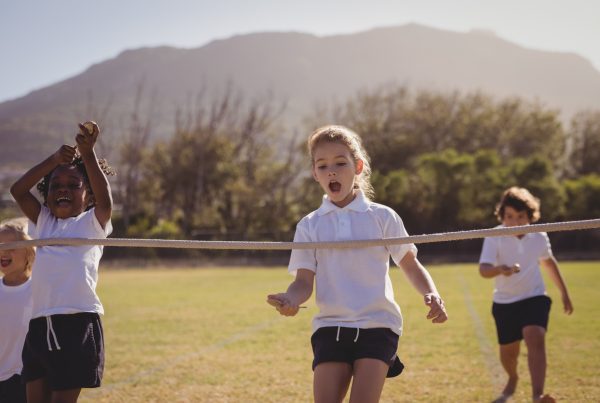Training for sports performance? Clive Brewer for Human Kinetics details programme insight for developing running speed and agility skills.
In all arenas, sports performances have evolved continuously since competition became formalised and training modalities were developed to enable performers to push themselves to excel. Indeed, most sports have become more dynamic. The success of a play is often now determined by the intensity of action that the performers can achieve.
Running speed and movement agility are two performance characteristics that have been shown to correlate positively with game intensity in team and invasion sports. Running is the principal form of locomotion in many sports and is thus regarded as a fundamental motor skill.* Running is a ballistic mode of locomotion consisting of alternating phases of single-leg support (foot in contact with the ground) and flight, which occurs from toe-off to the beginning of the support phase of the contralateral leg. (See Running gait cycle.) By contrast, walking has no flight phase, and the support phase alternates between single- and double-foot contacts, depending on the stage of the cyclic action; therefore, walking can be considered a non-ballistic action.
*Mastery of fundamental motor skills is considered a precursor to their application in sport-specific contexts. Conversely, a lack of proficiency is recognised as a key reason for not participating in, or dropping out of, organised sport.
Technique and skill are functionally interrelated in the development of speed and agility. Indeed, an athlete’s running speed, usually regarded as a linear concept, can be determined by the technical skills and physio-mechanical abilities needed to achieve high movement velocities. Agility can be understood as the skills and abilities needed to achieve explosive changes in movement direction, velocities or techniques in response to one or more stimuli.
In basic terms, speed and agility are neuromuscular skills that rely on the athlete’s ability to express (or resist) forces; that is, they are a movement manifestation of the athlete’s functional strength. On the sport field or court, this strength is translated into sporting movements, and it can be improved in every athlete with correct coaching. Understanding movement and the way in which it changes with the performance context and the athlete’s level of development is essential when developing a speed and agility programme.
This chapter has three progressive aims. First, it enables an understanding of the biomechanical principles of running speed and agility so that the practitioner knows the factors that need to be influenced to enhance an athlete’s movement speed. Second, it introduces some basic technical models that can be used to analyse and develop the athlete’s skill when executing movement. Third, it provides some examples of skill practices that can be used to develop the athlete towards the required technical model.
Many resources focus on the provision of drills for developing both speed and agility. Without understanding and principles, these practices simply become drills to be followed; they cannot be progressed, regressed (as per the principle of differentiation based on competence) or usefully contextualised within an effective coaching programme. A holistic approach characterises practitioners who will have the greatest success in enhancing the athletic qualities of their athletes.
Running gait cycle
In the running gait cycle, leg speed is influenced by arm action. The cyclical and rhythmical movement includes three phases:
- Drive phase: One foot pushes off the ground, and the other knee is forward.
- Flight phase: Neither foot is in contact with the ground.
- Ground contact phase: The lead foot is in contact with the ground.
The knee drives forwards as the opposite leg extends under and behind the body, bringing the ankle close to the buttocks as it moves forwards under the body. The ankles remain dorsiflexed (toes pulled towards the knees) in flight and through ground contact.
Stride length, the distance between toe-off on one foot and ground contact of the other foot, is determined by the force of the push into the ground. In sprinting (Figure 8.1), the aim is to keep the centre of mass over or in front of the ground contact point.
The speed of running influences the running technique. Sprinting (Figure 8.1) is different from slower running (Figure 8.2). In sprinting, the heels don’t contact the ground; the ball of the foot contacts the ground, and the toes are pulled up towards the knees. In slower-paced running, moving over the flat foot is generally considered an economical, energy-saving way to run, but individual styles vary. More of a heel–toe contact is evident in many runners.
Figure 8.1 Gait cycle, sprinting. (a) stance; (b) toe-off; (c) flight; (d) ground contact
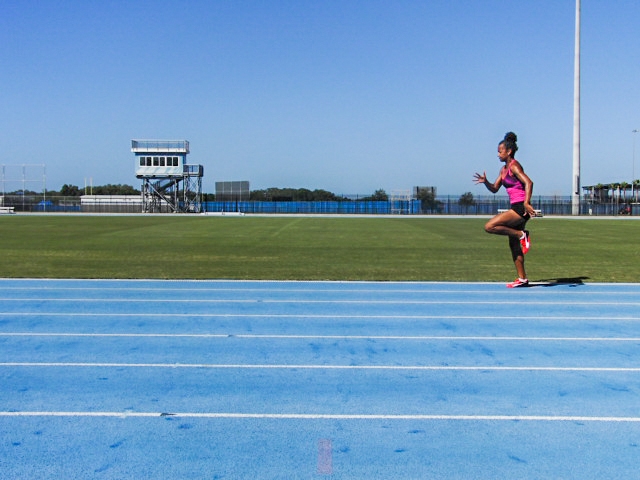
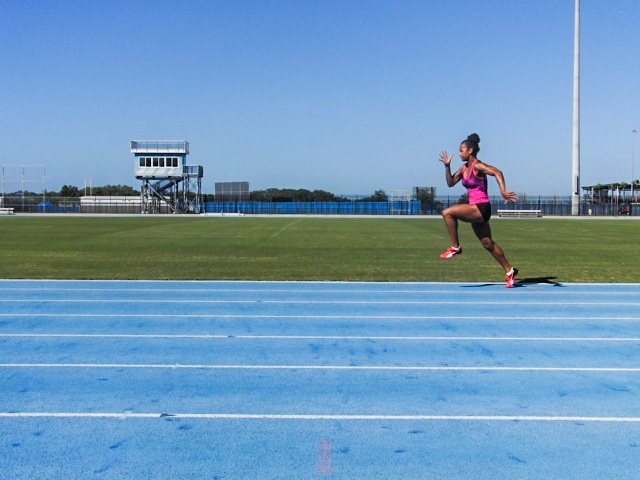
a b
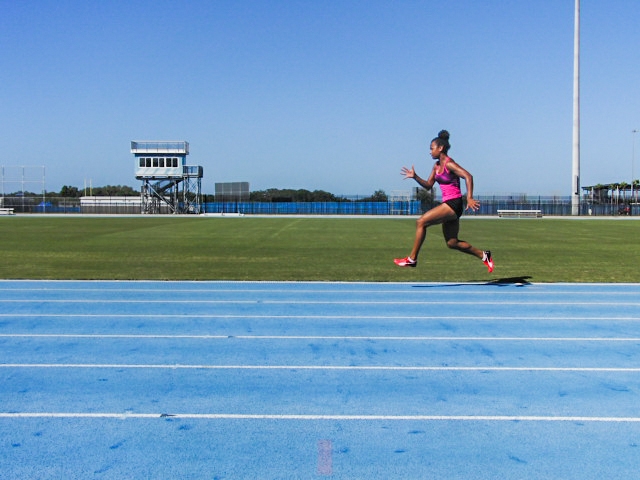
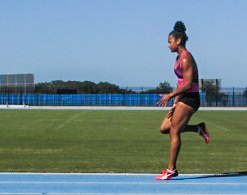
c d
Figure 8.2 Gait cycle, slow running. (a) stance; (b) toe-off; (c) flight; (d) ground contact
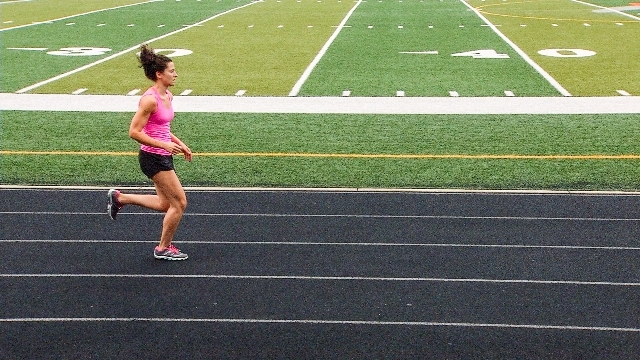
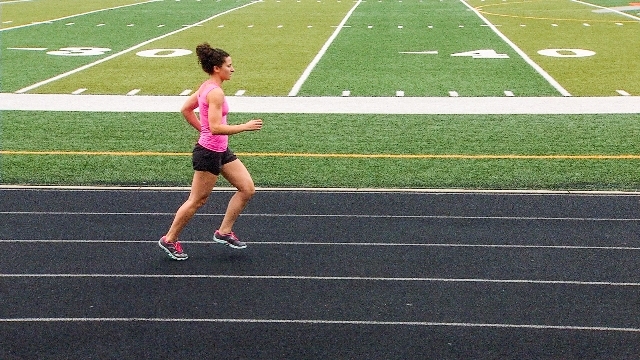
a b
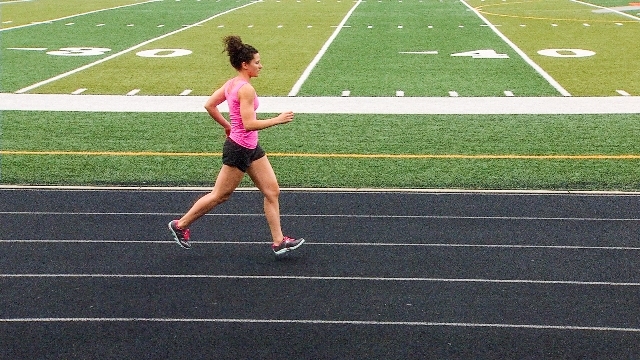
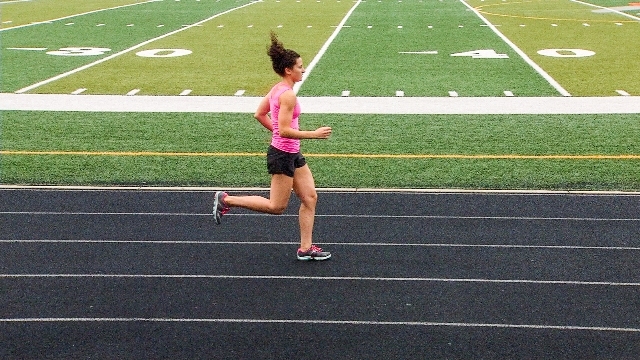
c d
Biomechanics of speed and agility
To understand movement speed and agility, the practitioner must understand not only the athlete’s technique but also the objectives of the skill being exhibited. These techniques and objectives are underpinned by management of forces and therefore require an operational understanding of the concepts of impulse, momentum, velocity, acceleration and deceleration. The athlete’s control of posture is also crucial in appropriately placing the centre of mass relative to the base of support and in optimising the length, velocity and tension relationships in the musculature as a function of joint positioning.
Postural control helps the athlete maintain stability, making it easier to accelerate or decelerate while executing particular actions, such as when achieving full extension of the driving leg in the initial phases of acceleration mechanics. Indeed, the inverse relationship between stability and mobility is important to understand in the context of enabling accelerations from different positions.
Running is a cyclic activity that consists of a series of contralateral strides that launch the athlete’s body as a projectile. Running speed is simply a relative concept relating to the distance that the athlete travels within a given period. Therefore, analysing sport-specific running-speed requirements is a concept of the relative intensity of the activity. The marathon runner who achieves the fastest speed over the 26 miles, 365 yards (42.2km) of the course will win the event, in the same way that the baseball player who can beat the ball thrown to first base will be safe, whereas a slower player will be out.
The more intense the action requirements are, the greater the velocity of movement is required and the more explosively the athlete needs to be in applying forces to the ground to execute a movement. The intensity of running is usually differentiated into sprinting and submaximal activities. Sprinting requires the athlete to achieve maximal accelerations and maximal velocities, usually over brief distances and for brief durations. This chapter focuses on this specific running-skill requirement.
Outside track and field, sport-specific speed is largely determined by the variation in movement velocities and the direction of the movement required, giving rise to the concept of chaotic speed, the ability to sprint repeatedly and change direction efficiently without unnecessarily slowing down. Chaotic speed is a determinant of successful sport performance in field and court sports as shown by time and motion, and coaching analysis and validation of testing batteries for elite and non-elite performers, and coaching analysis for sports such as rugby, field hockey, soccer and American football.
Therefore, in most athletic contexts, chaotic movement, or agility, is as important an athletic quality as maximum velocity. Indeed, in court-based sports such as tennis and volleyball, agility is the key movement skill for a performer. The nature of required agility also changes with different sports (Figure 8.3). For example, in invasion sports such as rugby, soccer or American football, the predominant requirement is the ability to accelerate into a space that either is occupied by an opponent (in a tackle context) or will create a territorial advantage (i.e., by moving into and attacking available space). Court sports such as tennis and volleyball are slightly different; the player needs to move into a position to intercept and return a ball and then decelerate to regain a position of stability from which to play a returning shot.
Many athletes also need to achieve optimal speed, the maximal velocity that the athlete can maintain, and still be able to control the execution of key sport-specific skills. For example, the critical speed variable for the long jumper isn’t the maximal velocity he or she can attain during the run-up to the take-off board; it is the velocity at which the jumper can maintain control of the centre of mass and effectively apply force into the ground to change the trajectory of the centre of mass (i.e., jump) during the last three strides of the run-up. Spending lots of training time trying to achieve a maximum run-up velocity of 10 metres per second may be unproductive if the jumper’s optimum take-off velocity is seven metres per second. That doesn’t mean maximum velocity should never be trained for, because by raising the maximum velocity threshold the range of optimal speeds that can be controlled may also increase. The point here is to consider how much emphasis to place on maximum velocity within the training programme and where it fits into the athlete’s overall development plan.
Sprint coach Percy Duncan often described the difference between running and sprinting this way: ‘You run on the ground; you sprint over it.’ As the athlete accelerates by pushing the foot into the ground, the velocity of the centre of mass increases and the ground contact time decreases. A trained athlete typically requires 0.6 seconds to achieve maximal force production, but typical ground contact times in running are less than 0.2 seconds (submaximal running) and less than 0.1 seconds in maximal sprinting. Impulse and power are important training qualities for the athlete to develop; the resulting change in momentum is a product of the force produced and the time for which that force is applied.
Figure 8.3 Sport-Specific speed is a product of movement velocity and agility.
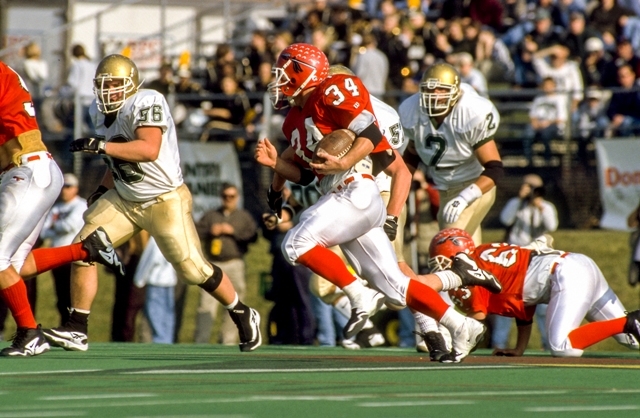
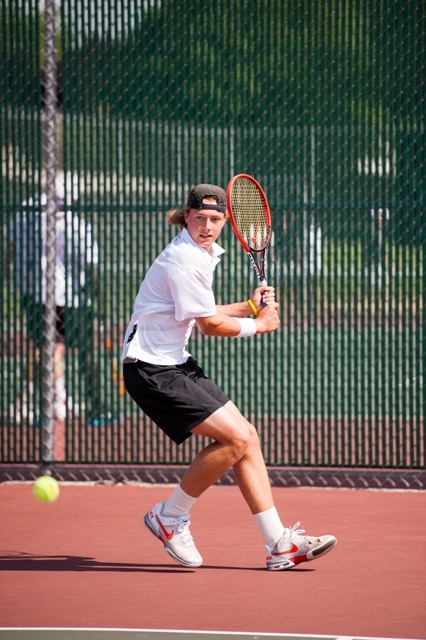
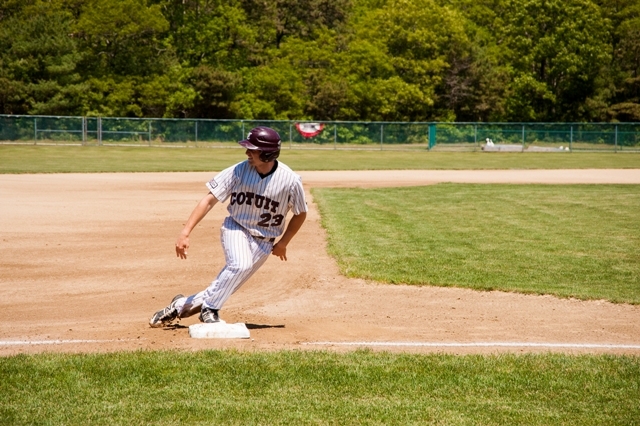
Pilsk (ref 1) illustrates that the mechanics of running should be analysed in light of how each of these variables influences performance. For example, more force is needed to accelerate and decelerate a predetermined mass (for example, the athlete’s body) at a greater rate, more impulse is needed to achieve a greater momentum in a set period (for example, the time available to accelerate into space between opponents), and more power is needed to achieve a higher maximum velocity with a set resistance (for example, the athlete’s mass).
The ability to achieve high movement velocities requires skilful force application across a spectrum of power outputs and muscle actions that need to be developed within the overall context of the athlete development programme. High rates of force are developed predominantly through the stretch-shortening cycle that underpins explosive strength development. In a running context, joint stiffness, particularly in the ankle, is essential to maximise the plyometric responses in the leg muscles, especially in the hip extensors of the rear kinetic chain. These forces, which may be many times bodyweight,(ref 2) are transmitted through a single-leg stance. Therefore, the athlete’s technical proficiency and functional strength need to be addressed simultaneously within the development programme to prevent injuries.
Developing positive, or acceleration, forces is not the only consideration in training for sport. For example, when decelerating, eccentric strength (especially in the knee extensor muscles in the thigh) is important in rapidly and effectively overcoming inertia to reduce the forward momentum in the athlete’s body without injury (Newton’s first law). The ability to produce high power outputs (high force, high velocity) is particularly important when collisions are a fundamental part of the movement problem, because the opponent’s body mass has to be either decelerated (defensive move or tackle) or accelerated (offensive collision), depending on the context.
Movement efficiency is the result of the mechanical actions of the body in sparing metabolic activity that relies on the athlete’s postural control, in particular the relationship between the centre of mass and the base of support. The stability of an object (i.e., its resistance to movement because of external forces) is inversely related to its mobility (i.e., its ability to move), a concept important to understand in the context of enabling accelerations from different positions.
To accelerate from a static position or to change direction when the body is moving, the athlete has to be able to move the centre of mass outside the base of support (i.e., move into a more unstable position). To decelerate, the opposite is true, and the athlete needs to bring the centre of mass back towards the base of support and create more stability. As shown in Figure 8.4, deceleration is achieved by reducing stride length, increasing both stride frequency (number of times the foot is in contact with the ground) and the foot surface area in contact with the ground (increasing frictional braking force). Lowering the centre of mass as the trunk becomes more upright brings the centre of mass back inside the base of support.
Acceleration (Figure 8.4a) requires instability. The centre of mass must be outside the base of support in the intended direction of motion. Deceleration (Figure 8.4b) requires stability. The centre of mass must be brought within a wide base of support, and friction must be increased to retard forward momentum.
Figure 8.4 The relationship between mobility, stability and the potential for changes in velocity. a) Acceleration requires instability b) deceleration requires stability
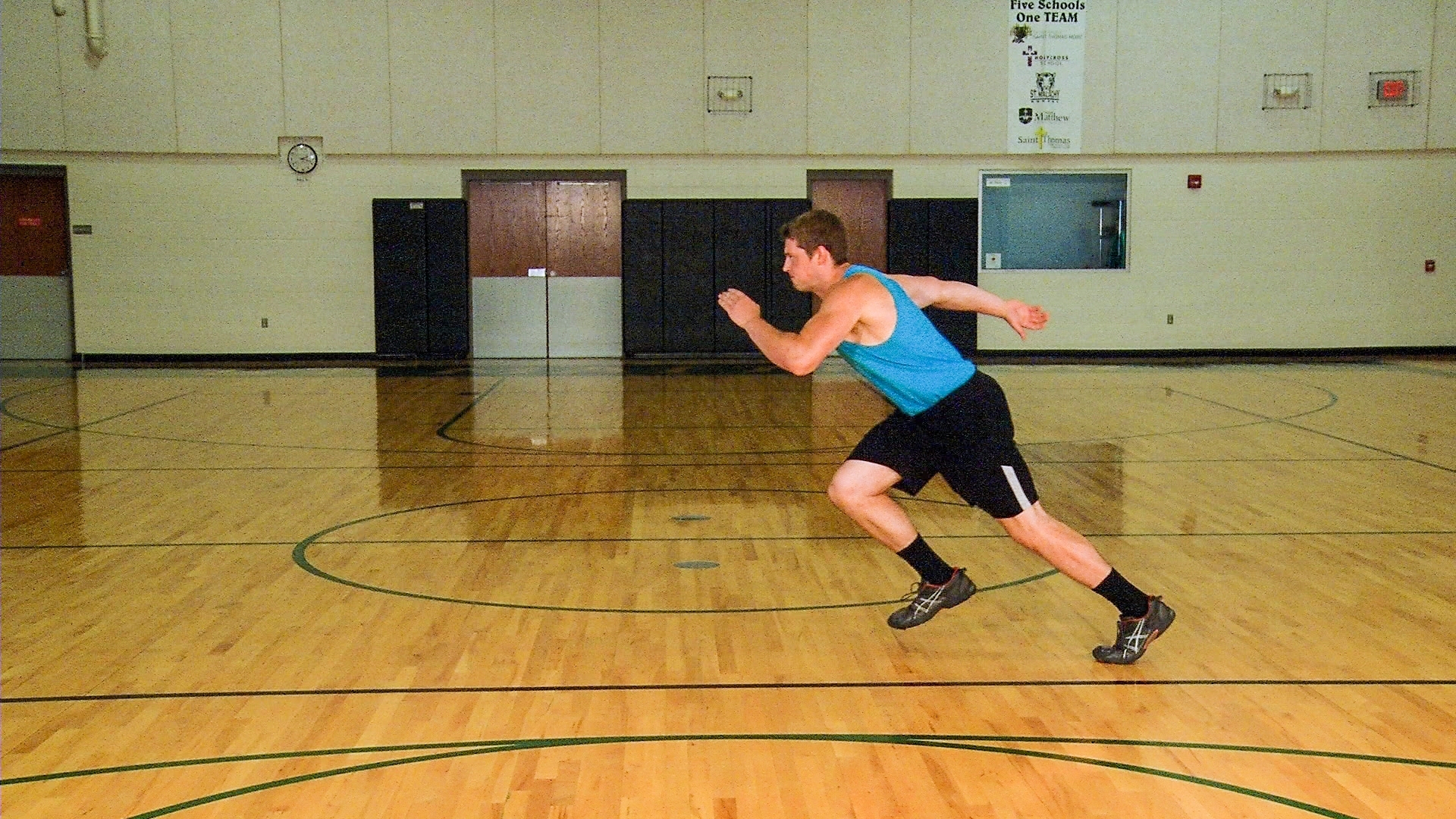
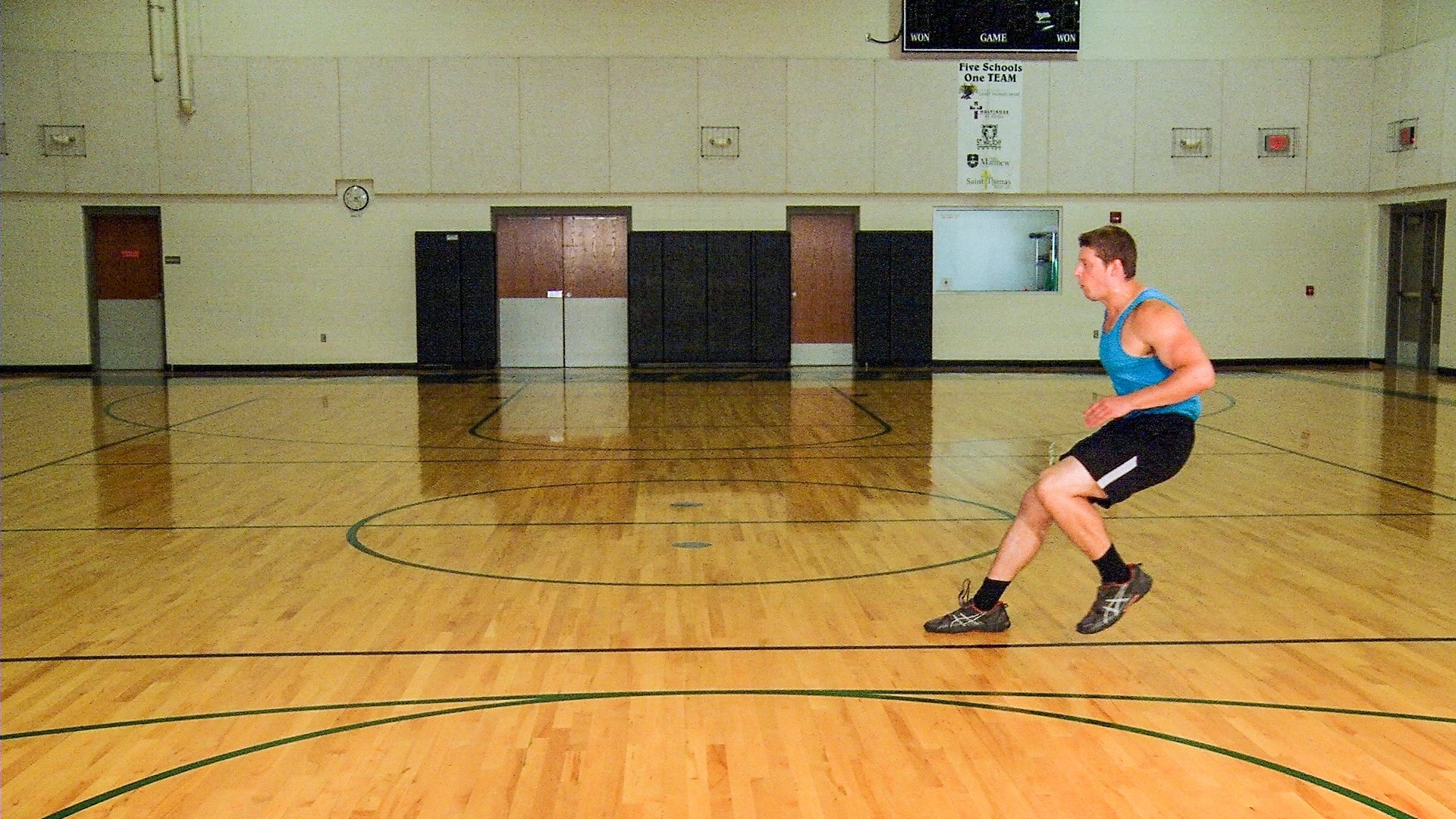
a b
Sport-specific running requirements
Maximal velocity running is unsurprisingly best illustrated through the 100-metre sprint race, and the technical model for the various phases of a sprint performance in any sporting context is based on this. The application of speed within field sports, however, is typically quite different from the nature of speed in a linear track race. This consideration is important when developing programmes for athletes in a range of sporting contexts.
Those working within a particular sport should be familiar with activity analysis of a sport or event. In many cases, published papers provide this evidence for the coach, showing, for example, the number of accelerations, number of maximum sprints, number of transition movements as well as the sequencing, distances and patterns of such movements. Understanding such patterns is important, because the technique required for each activity will be different. Equally important, the transitions between activities should be smooth, effective and efficient.
Reaction time (RT): This phase comprises the delay between the stimulus (i.e., the starter’s gun being fired) and the first movement response (in this case derived from a sensor in the starting blocks) in the athlete. In a linear sprint activity such as the 100 meters, this phase is probably unrelated to the final time achieved. Practitioners should note that reaction time is not considered particularly trainable, but it needs to be distinguished from reactive ability, which is a product of neuromuscular system excitability that can be improved through reactive and explosive strength training (e.g., plyometrics). In an agility context, the training of reaction time is different and is an important part of ‘skilful agility’.
Acceleration phase: During this phase the athlete has to overcome inertia from a standing start to achieving the greatest rate of acceleration. This phase usually takes eight to 10 strides, or 15 to 20 metres. Note that track athletes still accelerate (increase their velocity) after this point, but the rate of acceleration slows.
Transition phase: This phase, which usually lasts for 2 to 2.5 seconds, represents the neuromuscular link between pure acceleration and maximum velocity running and the transitioning between the different technical requirements for each phase. The IAAF sprints editor and renowned coach Loren Seagrave often refers to this as the most difficult phase to coach, because the athlete often retains acceleration mechanics too long or, equally inappropriately, incorporates maximum velocity mechanics into the action too early.
Maximum velocity phase: Typically, sprint coaches analyse this phase of the race in two sections. In phase 1, quality sprinters usually achieve maximum velocity around 40 to 60 metres and maintain it for around 20 metres. In the second maximum velocity phase, usually around 60 to 80 metres, the athlete slows very slightly as he or she tries to maintain maximal velocity. (Note that female sprinters are usually less able to hold this speed than males are.) Sprinters can achieve maximum velocity earlier than this (and do so for specialist sprint races, such as the indoor world championships run over 60 metres), but those who achieve their maximum velocity too early through the 100 metres struggle to achieve a good overall time because they cannot maintain this velocity long enough.
Speed endurance phase: Although commentators in a 100-metre event talk about athletes ‘pulling away from others’ in the last 20 metres of the race, this doesn’t actually occur because of active acceleration. During this phase of the race, athletes decelerate because they cannot maintain maximum velocity. The athletes who are seen to be pulling ahead are actually just decelerating less than their opponents are.
In contrast, the activity analysis of field sport athletes shows different patterns of acceleration, deceleration and maximum velocity that are determined both by the positions the players play and the opportunities available for movement on the field at any one time. As Figure 8.5 illustrates, technological advances in athlete tracking enable individual player activity profiles to be established. Such analysis typically shows that field sport athletes sprint 10 to 30 metres, or for two to three seconds, which means that to be effective, they need to be able to achieve maximum velocity much quicker than the track athlete (even though maximum velocity will ultimately not be as quick, or held for so long).
Figure 8.5 A movement speed profile for an elite rugby league player during one passage of game play
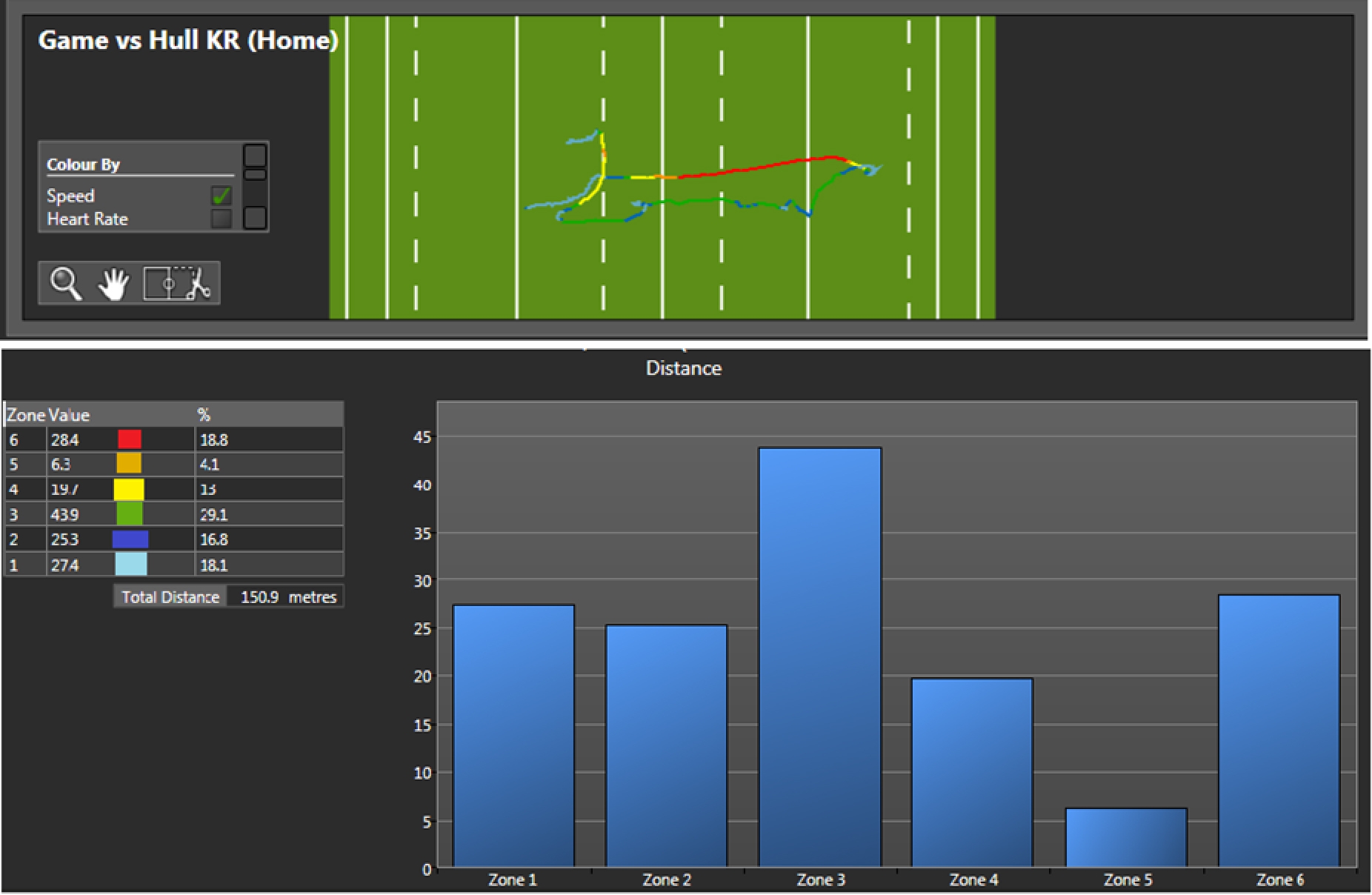
Therefore, high-speed movements in sport often can be characterised by an activity sequence that enables the athlete to manipulate the temporal and spatial situations encountered in a game. Such sequences are typified by transitions from acceleration to deceleration and corresponding changes in movement direction to exploit space, manipulate opponents or achieve technical advantage (i.e., be better placed to execute a desired action). In this context sport-specific speed might be described as the following:
Acceleration: The initial movement response is acceleration, often from an already moving position, such as a walk, submaximal run or landing from a jump.
Deceleration: In many movement sequences in field sports, space is initially limited, so periods of rapid acceleration are often followed, after a couple of metres or a second, by a (rapid) deceleration. Deceleration may enable the athlete to achieve a more advantageous body position to execute another movement skill (e.g., to change direction) or to initiate a movement response in an opposition player to create some space or uncertainty in the defender’s mind and therefore improve relative positioning.
This is an extract from the book: Athletic Movement Skills: Training for Sports Performance by Clive Brewer, by Human Kinetics and has been reproduced with permission. Use code FP25 for your FitPro member discount on this text. Visit: http://www.humankinetics.com/products/all-products/athletic-movement-skills for more information about the text.
References
<1> Pilsk, S. 2008. Spend, agility and endurance development. In Essentials of strength training and conditioning, ed T.R Beachle, and R.W. Earle. Champaign, 1L: Human Kinetics.
<2> Mero, A, P.V. Komi and R.J Gregor. 1992. Biomechanics of Sprint Training. Sports Medicine 13 (6): 376-392





